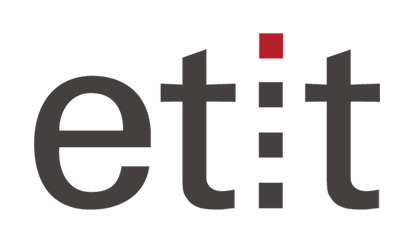Finding the Needle in the Haystack
etit scientist develops T-Rex selector
2025/02/26 by emergenCITY
Finding missing people under rubble after an earthquake is a major challenge, even for rescue robots. The situation is similar in medicine: finding genes that are responsible for specific diseases is complicated. Sometimes it’s like looking for a needle in a haystack. With the T-Rex Selector etit scientist Jasin Machkour has developed an efficient method for applications such as these as part of emergenCITY.

Under the title “The terminating-random experiments selector: Fast high-dimensional variable selection with false discovery rate control”, a paper has now been published in Signal Processing, one of the most renowned journals for signal processing. The authors Jasin Machkour, Michael Muma, and Daniel P. Palomar present a method that controls a user-defined false discovery rate (FDR) in large-scale, high-dimensional data and simultaneously maximizes the number of selected variables.
The T-Rex algorithm can deliver reproducible results in significantly less time than benchmark methods. While these require five hours of computation time for variable selection problems with 5,000 variables, the T-Rex selector manages five million variables in the same time.
This is relevant for the emergenCITY rescue robot Scout, for example. The radar data can be used to find the right directions, in which missing persons are located, more quickly while reducing false alarms.
Research Associate in the Robust Data Science Lab
Recommended external content
We have selected external content from YouTube for you and would like to show it to you right here. To do this, you must reveal it with one click. You can hide the external content at any time with another click.
I agree to external content from YouTube being shown to me. This may result in personal data being transmitted to third-party platforms. You can find more information in our Privacy Policy.
Collaboration with Charité Berlin
In general, the T-Rex selector could be of interest for various applications, including medical studies. For example, there is already a collaboration with Charité Berlin to investigate whether the methods are suitable for achieving the same results as conventional methods with less data, i.e. with fewer study participants.
The open-source software package also developed by the researchers has already sparked great interest. It has already been downloaded 16,000 times since it was made publicly available.
In another article, which will soon be published in the Journal Signal Processing, as well as two conference papers, which will be presented in April at the International Conference on Acoustics, Speech, and Signal Processing (IEEE ICASSP), the largest conference for researchers in the field of signal processing, the scientists present further methodological and algorithmic results as well as software solutions on the topic, including an extension to complex-valued data.
Always up-to-date with exciting news from the etit campus: Follow us on Instagram!
Recommended external content
We have selected external content from Instagram for you and would like to show it to you right here. To do this, you must reveal it with one click. You can hide the external content at any time with another click.
I agree to external content from X being shown to me. This may result in personal data being transmitted to third-party platforms. You can find more information in our Privacy Policy.



